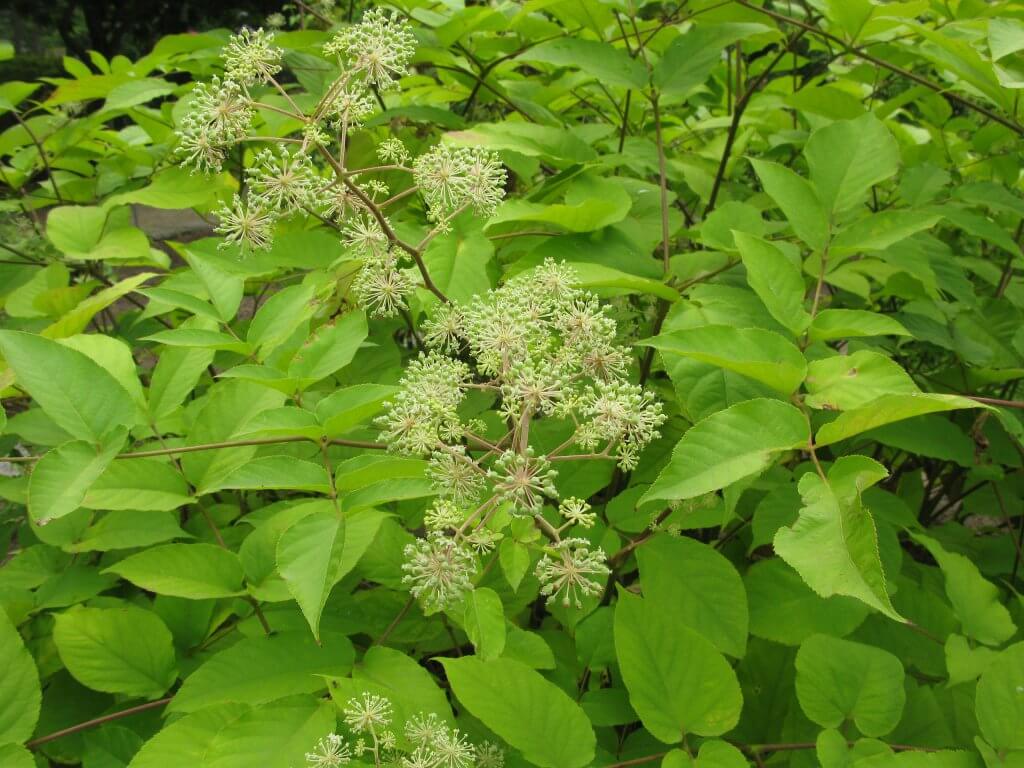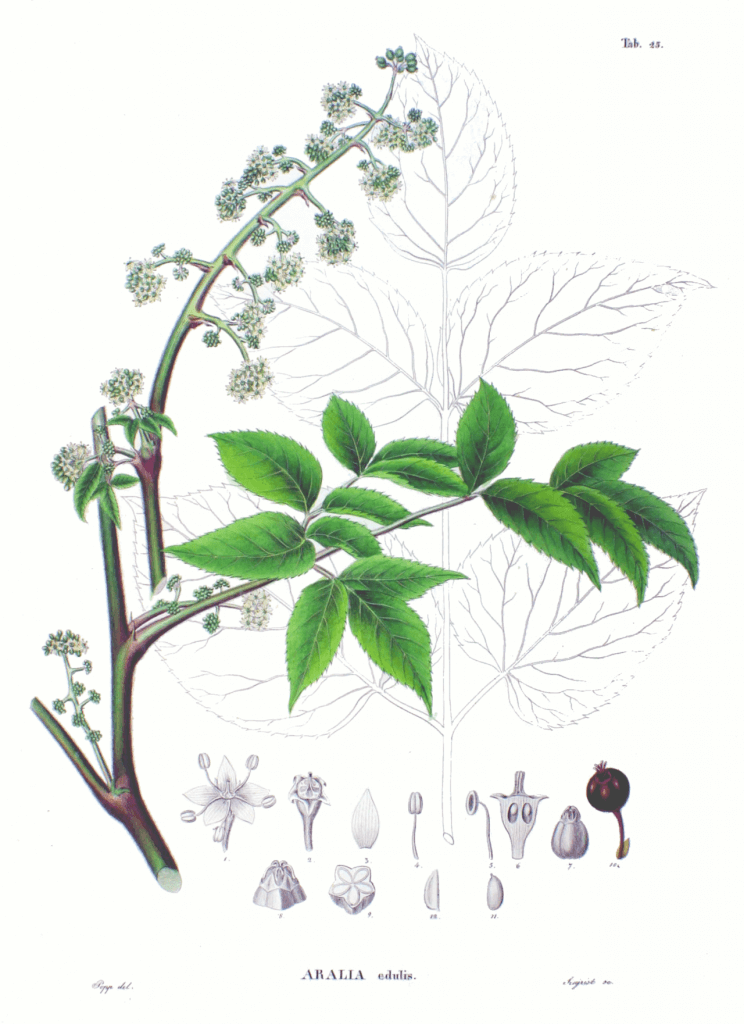Aralia (Aralia cordata) is a herbaceous and perennial plant native to many parts of Eastern Asia, including Japan, Korea and China. It can grow to a maximum height of approximately 3 metres and can usually be found growing in the wild within mountainous, wooded areas with gentle slopes.
During spring the leaves are usually golden in colour, and can sometimes transform into bright green during the summer. The plant resembles a small to medium sized bush when fully mature. The deciduous leaves are fairly broad and appear quite soft, giving the plant a very appealing and ornamental look. When flowering in June and July, it can produce loose clusters of delicate white flowers that are particularly attractive to pollinators like bees.
Other common names include Spikenard, Sun King, Herbal Aralia, Japanese Spikenard and Mountain Asparagus. The genus that Aralia cordata belongs to contains a number of other similar species that can be found across America as well as Asia, however these were likely introduced and some are currently considered an invasive species in the US.

(Source: Qwert1234/Wikimedia Commons)

(Source: Philipp Franz von Siebold and Joseph Gerhard Zuccarini/Wikimedia Commons)
Cultivation and History of Aralia
Aralia is primarily grown for culinary uses and for its aesthetic appeal, however it is often grown and harvested for use in traditional medicines and remedies. It has been grown and cultivated for many centuries in Eastern Asia. When first introduced to America in the early 1900’s its culinary popularity was not as successful as in East Asia, however it is now being cultivated and used within an increasing amount of exotic dishes in restaurants across the US.
Toxicity
When planting the plant typically prefers a semi-shaded position with dappled light and it is considered frost tender. It also prefers moist, normal to sandy soil with a neutral or slightly acidic pH. Many consider aralia easy to grow as it does not require much attention or additional fertiliser and growth tends to be quite rapid.
You can only consume the tiny (3mm) black/purple, stone bearing fruits on this species of Aralia.
Uses
Culinary uses of Aralia
The root of aralia is often used as a substitute for ginseng in China, however the shoots are the most widely consumed part of the plant. Each spring harvest and blanch the new shoots for use in Asian dishes. The shoots have a fairly strong but appealing aroma and flavour. When preparing it is usually best to soak, peel and cook before eating to remove the slight resinous taste. You can add them to salads, soups, pickles and stir fry.

(Source: ja:利用者:たね/Wikimedia Commons)
Medicinal uses of Aralia
The medicinal value of Aralia has not been widely recognised worldwide, it is more commonly used in traditional remedies. Its roots are usually the part of the plant with the most medicinal value. The roots are commonly used in Korean herbal medicine for treating general pain, common cold, migraines, inflammation and fevers. When preparing, the roots are collected, dried and used within herbal remedies, from powders to ointments.
Did you know…
The planting position of Aralia can directly effect its colour. When planted in an area with a higher amount or full sunlight, the leaves will retain their bright golden colour. When growing in full shade, the leaves will eventually transform into a bright and equally beautiful lime green.
Conclusion
Aralia is a beautiful plant that can add a bright and tropical splash of golden, green colour into a garden. It’s attractive foliage and ability to grow well without much care makes it especially popular in a range of gardens, from beginners to experts, as it is easy care for. Although its culinary use is not as prolific as within Asia, many gardeners in Europe and Northern America are growing Aralia for use in exotic dishes and cuisines. The young shoots can make a tasty and unique addition to a number of meals for those wishing to experiment.
—————Written by Hannah Sweet
Hannah is a freelance writer and graphic designer from the UK. With a penchant for travelling, photography and all things botanical, she enjoys writing about a wealth of topics and issues, from conservation and slow living, to design and travel. Learn more about her writing and design services at www.sweetmeanders.co
Many of our readers find that subscribing to Eat The Planet is the best way to make sure they don't miss any of our valuable information about wild edibles.
See our privacy policy for more information about ads on this site






